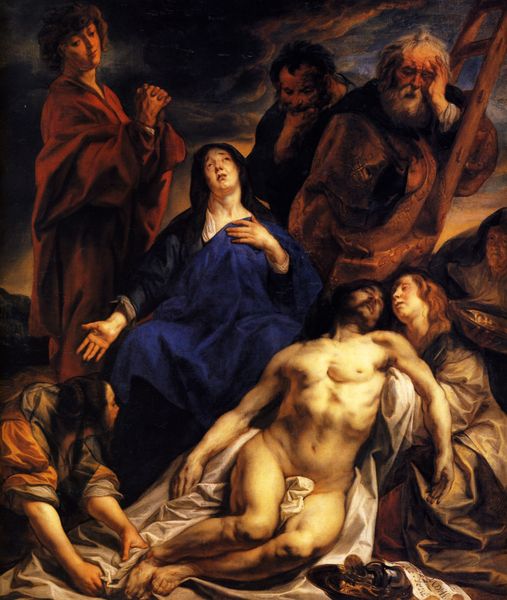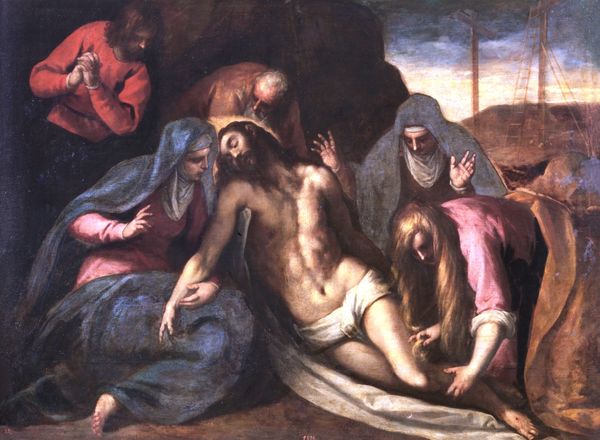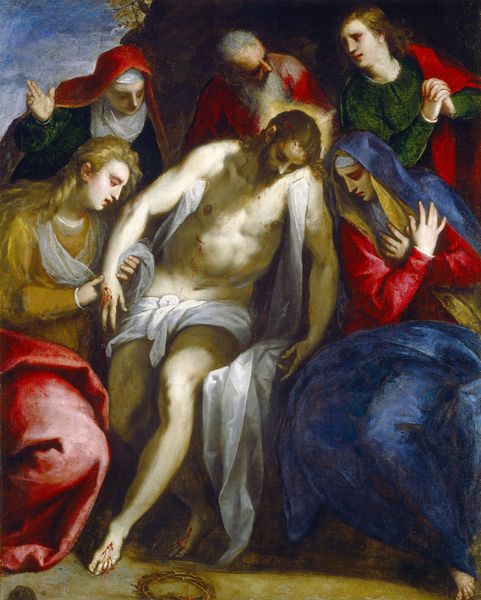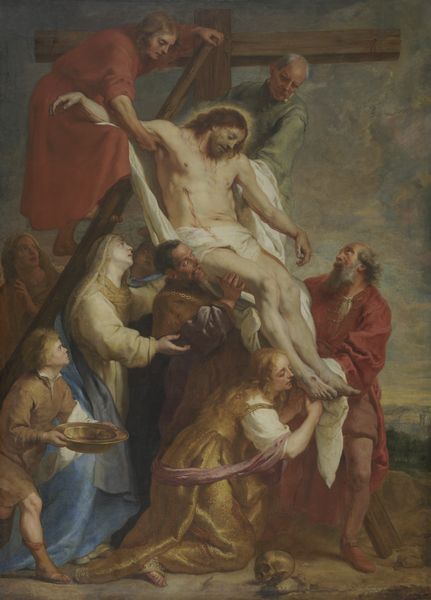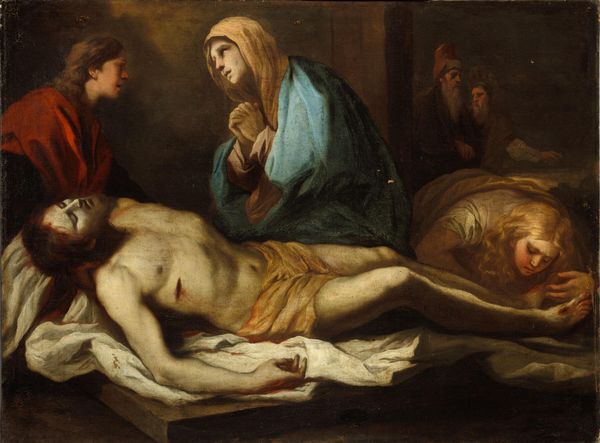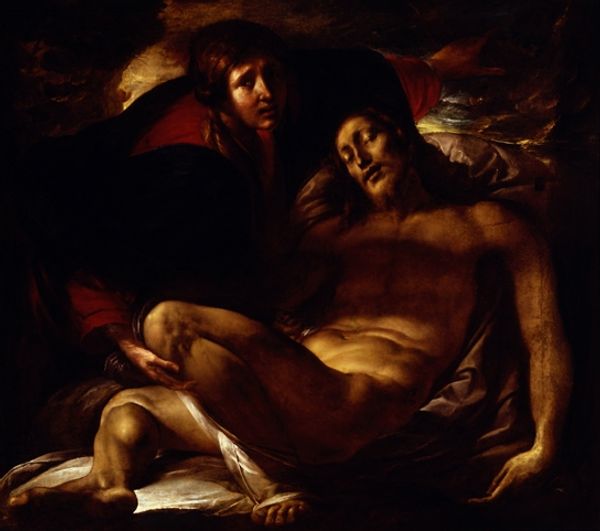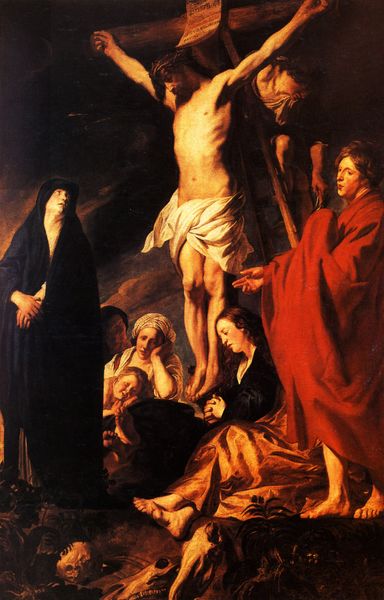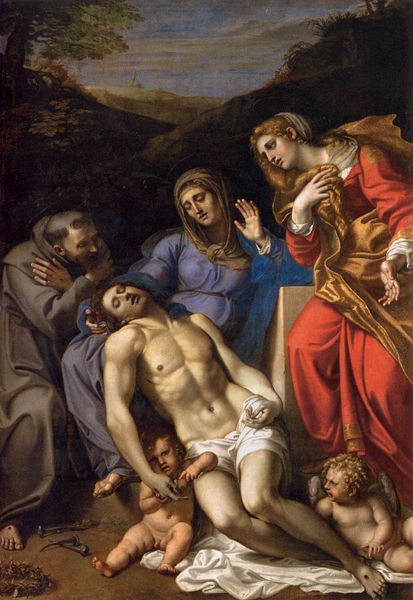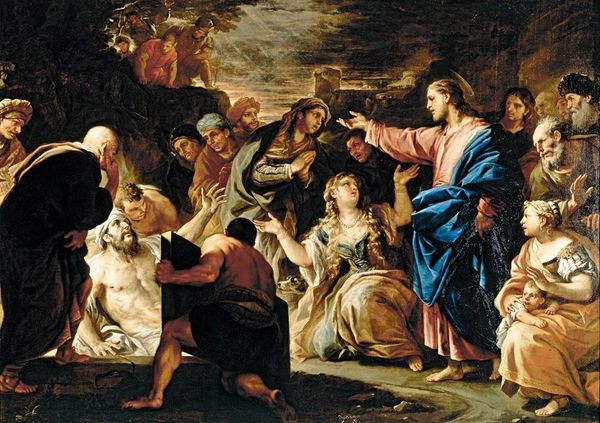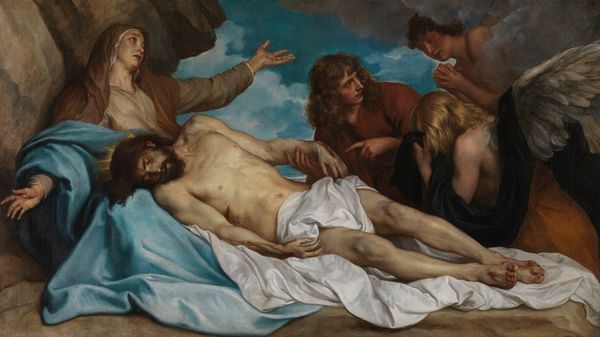
oil-paint
#
baroque
#
oil-paint
#
figuration
#
oil painting
#
chiaroscuro
#
history-painting
#
realism
Copyright: Public domain
Anthony van Dyck made this Pieta with oil on canvas sometime around the early 17th century. Looking at the work, you see how it relies on the inherent qualities of paint – its viscosity, transparency, and capacity for layering. Van Dyck skillfully manipulated these materials to create a range of textures and emotional effects. Observe the delicate rendering of flesh, achieved through subtle gradations of tone. Note also the fluid brushwork in the drapery, conveying a sense of movement and drama. The creation of such a painting involved a complex division of labor. From the production of pigments to the weaving of the canvas, many hands contributed to the making of this artwork. Van Dyck, as the master artist, oversaw the entire process, but he also relied on the skills of his assistants and suppliers. In turn, the painting itself was destined for a specific patron and audience, reflecting the social and economic structures of the time. By attending to these material and social dimensions, we can gain a deeper appreciation for the Pieta. It prompts us to question the traditional hierarchies between fine art and craft, recognizing the value of skilled labor and the interconnectedness of creative production.
Comments
No comments
Be the first to comment and join the conversation on the ultimate creative platform.
